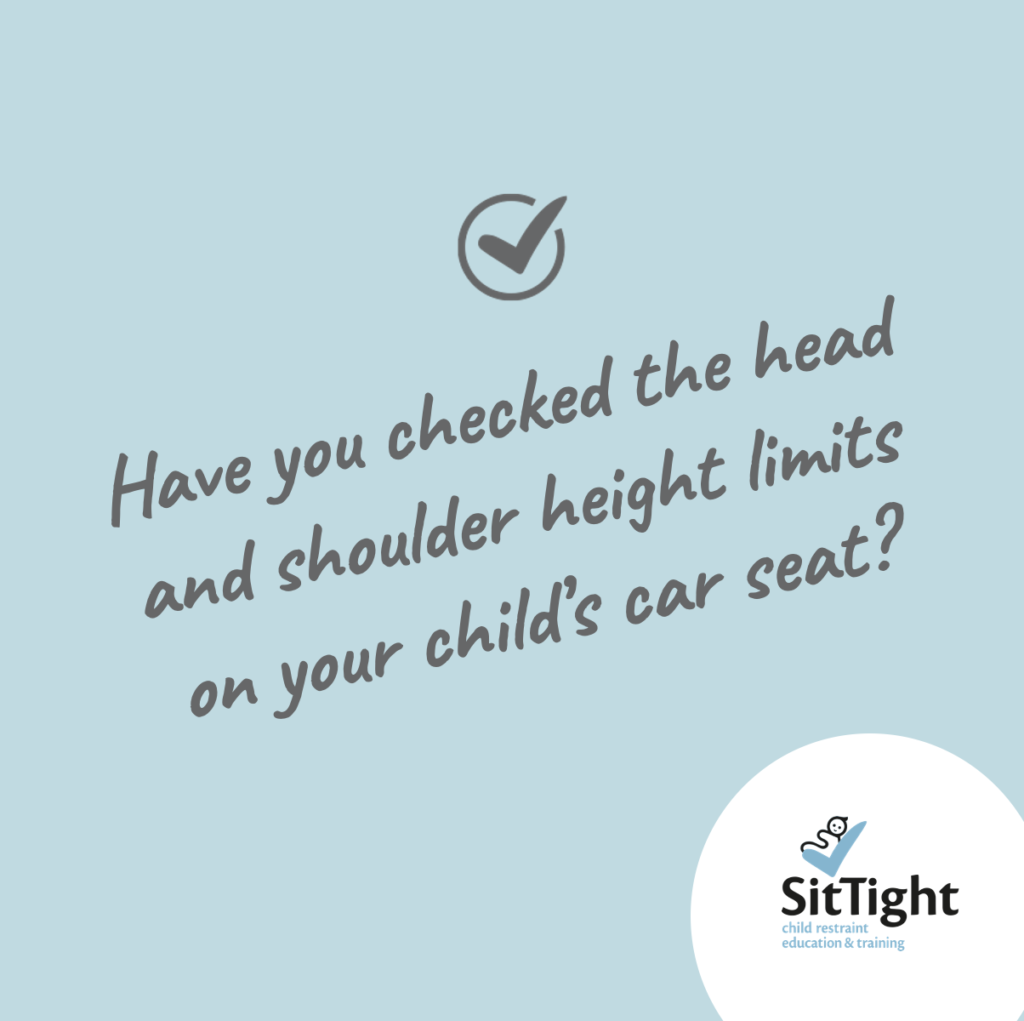
How do you know if you have the right car seat for your child? The first thing to check is your car seat’s limits and whether your child is within these.
Have you noticed that a lot of child restraints advertise a weight and/or height limit which is used to tell you how long your child will use the seat for?
It’s important that your child is within these limits, but these are only the first things to check to be sure you have the right car seat.
A reasonable assumption is made by parents that their child will be able to use the seat until they reach the maximum weight and/or height limits advertised. However, there are other limits to be aware of in addition to these – and often children reach these other limits well before they reach either the seat’s weight or height limit. So, you may choose a child restraint thinking that because they fit within the weight and height limits it’s the right car seat for your child, when in fact they may have already outgrown the seat.
The other factors to consider, which are likely to be the two measurements that your child reaches first, are:
Harness Height:
Where does the harness sit on your child’s shoulders? And how does this compare with the car seat’s rules? Check your instruction manual to confirm what is allowed and whether this means you have the right car seat for your child.
The harness height is checked by comparing where the shoulder harness comes through the seat shell and how this lines up with your child’s shoulders. If the harness comes through the seat in a position that is in line with or “even with” your child’s shoulders that will always be OK. Alternatively, your car seat’s instruction manual will tell you if the harness can be coming through the seat from “above” the shoulders or “below” the shoulders.
If the harness can be coming through the seat shell in a position that is “even with or above” the shoulders, then once your child’s shoulders have reached the top harness slot they will not be able to grow any taller and continue to use the child restraint. If they do, the harness will then be coming from “below” their shoulders and if this is not allowed with your car seat, then your child has outgrown the seat, even if they have not reached the overall weight and height limits. If they have outgrown the harness, it is no longer the right car seat for your child.
Head Height:
Check how your child’s head lines up with the shell or headrest of the seat. The general rules are:
Rear-Facing Head Height
Ensure your child’s head is at least 2.5cm lower than the top of the seat shell.
Forward-Facing Head Height
Check that your child’s ears do not come above the top of the seat.
Again, it is essential to check your car seat’s instruction manual to confirm these particular measurements as they may differ slightly between seats.
These two measurements, the head and harness heights, are often reached well before a child reaches the weight or height limits of a seat, so being aware of these is important.
Whichever limit is reached first is the one that tells you your child has outgrown the seat. Why not check yours now?
You’re always welcome to make contact with us at SitTight to ask questions about the correct, safe and legal use of child restraints. Or you can follow us on Facebook or Instagram.